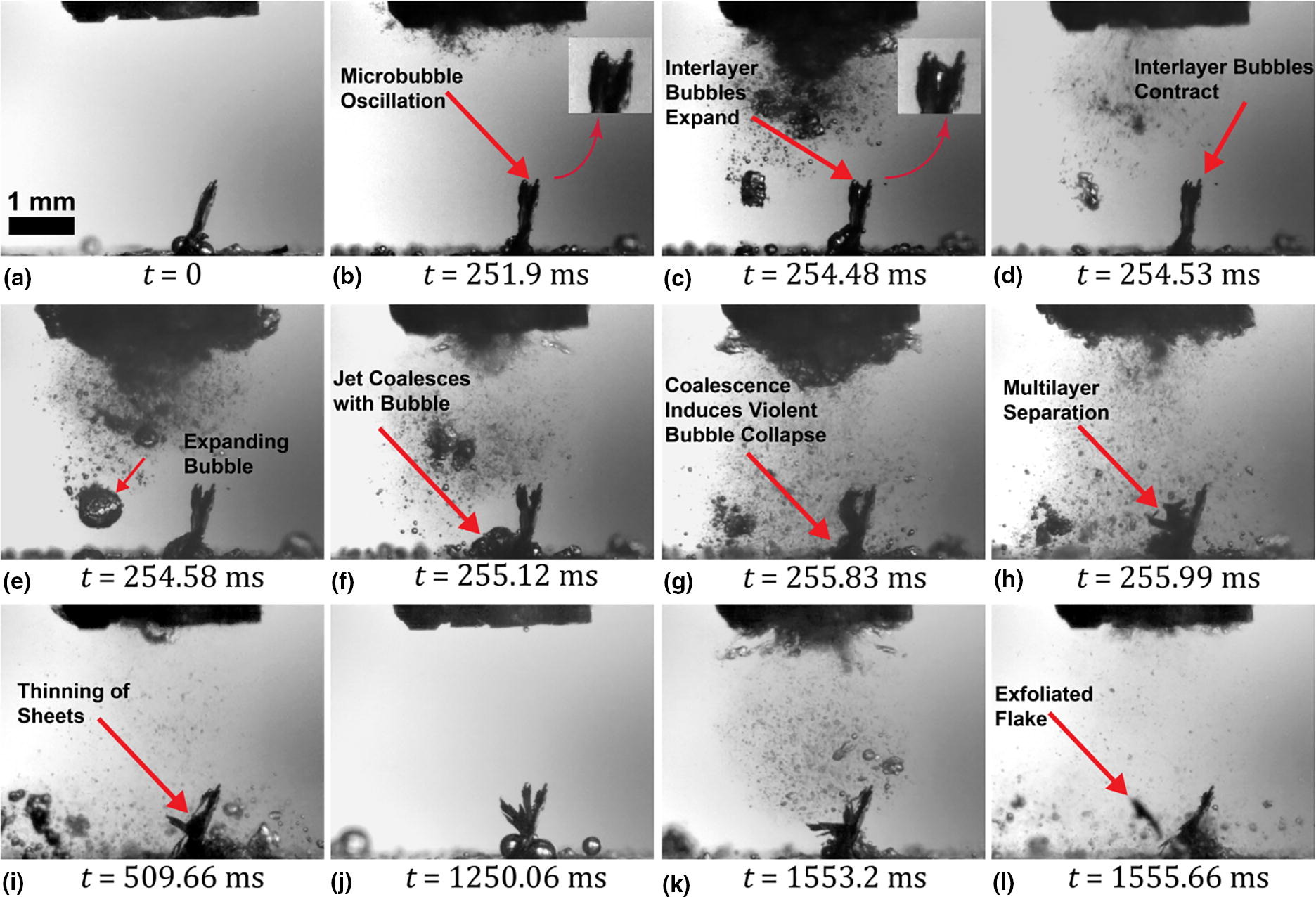Sono-Exfoliation

For the first time a series of systematic and quantitative studies led to the elucidation of the sono-exfoliation mechanisms of bulk-layered graphite samples. Real-time methodological experiments revealed that shock waves with a pressure magnitude up to 5 MPa are the main driving exfoliation mechanism in a sonicated environment. Moreover, micro-jets in the range of 80 m/s were seen to produce liquid mass entrainments that split graphite layers effectively, while expanding and contracting forces emitted by oscillating (stable) cavitating bubbles also contributed to the exfoliation process.
Four specific manifestations of “flowering”, “slicing”, “splitting” and “branching” driven by the two main mechanisms of transient and stable cavitation were identified and demonstrated to be essential contributing factors to graphite exfoliation. Acoustic streaming is seen to aid in the dispersion of the exfoliated flakes, as well as promoting bubble migration to the interlayers, and providing additional layer separating forces, leading to “page-flipping” exfoliation.
